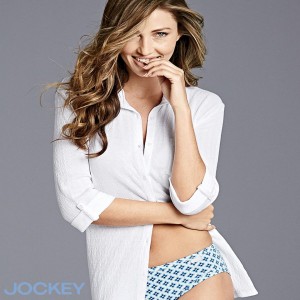 Page Industries, Master Franchisee for Jockey in India has no credible competition in the Intimate Fashion & Nightwear Market of Mid-Premium segment. Hanes, which was projected to emerge as the second significant brand in India post its licensing deal with Arvind Lifestyle Brands in February 2013, has not been aggressive in building presence in the channel as of now. On one hand, companies such as Chromozone and Enamor, which have built good business models, lack scale to pose a credible threat to Page while on the other hand, companies that have the requisite scale (Rupa) have not been able to build a credible brand in the mid-premium segment and an efficient business model to pose threat from a competitive standpoint.
Page Industries, Master Franchisee for Jockey in India has no credible competition in the Intimate Fashion & Nightwear Market of Mid-Premium segment. Hanes, which was projected to emerge as the second significant brand in India post its licensing deal with Arvind Lifestyle Brands in February 2013, has not been aggressive in building presence in the channel as of now. On one hand, companies such as Chromozone and Enamor, which have built good business models, lack scale to pose a credible threat to Page while on the other hand, companies that have the requisite scale (Rupa) have not been able to build a credible brand in the mid-premium segment and an efficient business model to pose threat from a competitive standpoint.
Big Retail Franchisee Opportunity
As per our channel checks, Page’s channel commissions at the retail level are 5-10% lower (25% versus 30-35% paid by other companies) versus other companies. It’s not that the retailers make lesser money while selling Page’s products; in fact, they end up making same/a bit higher returns on their capital deployed while selling Page products versus other companies as velocity of sales of ‘Jockey’ brand is much higher versus other brands. Higher velocity by enabling higher inventory turns for the retailer compensates for lower commissions paid by Page versus other companies and hence retailers make the same or a bit higher RoCE by selling Page’s products versus other companies.
Why on the Shopfloor Salesmen Prefer Jockey to Sell at Lower Commissions ?
Higher sales velocity is also a big motivator for the salesman at the retail level to promote a particular product over others which might be offering higher commissions. Intuitively, it might seem that a salesman on the shop floor would try to push higher margin products to consumers but that’s not the reality. Actually, our channel checks indicate that a salesman prefers to sell ‘Jockey’ versus other brands even as commissions on ‘Jockey’ are lower. This is because it takes very little time for him to close a transaction while selling ‘Jockey’ as the customer is already aware of the brand and its fit. Whenever a salesman tries to sell relatively unknown brands in which margins are higher, it takes much longer to close the sales transaction as customers take a lot of time to examine the product to gauge its look and fit.
This creates a significant competitive ‘moat’ for Page. Any new/small company trying to compete with Page at same price points and cost structure, the business model will generate only 4% post-tax RoCE versus upwards of 30% generated by Page Industries Ltd.